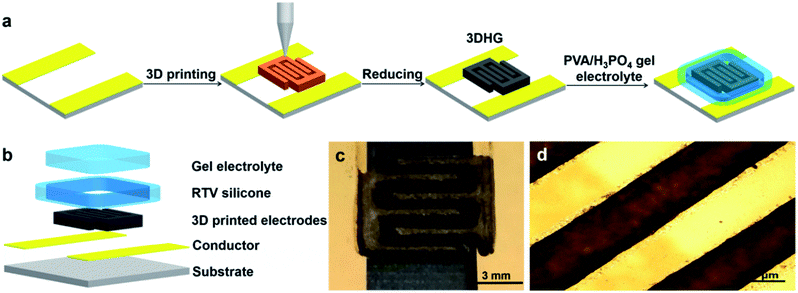In the recently published ‘ Direct 3D printing of a graphene oxide hydrogel for fabrication of a high areal specific capacitance microsupercapacitor ,’ researchers consider the capability for a graphene oxide (GO) hydrogel to be used as a bioink referred to as GO ink.
.
As 3D printing grows in popularity with users around the world, the development of smaller electronics and miniaturized platforms grows. This includes: Micro-electromechanical systems Biomedical sensors Wireless sensors Actuator drives As the demand for devices increases, so does that of energy storage like microsupercapacitors (MSCs)—micro-scale platforms offering high-power density, a long cycle life, and more.
.
Previously, methods for creating microsupercapacitors have resulted in electrodes with limited thickness, unable to store sufficient energy. For improving capacity, active materials must be more powerfully loaded with increased amounts for each electrode. 3D printing can be used here as it has shown not only versatility in such applications but […]
Case Study: How PepsiCo achieved 96% cost savings on tooling with 3D Printing Technology
Above: PepsiCo food, snack, and beverage product line-up/Source: PepsiCo PepsiCo turned to tooling with 3D printing...






























0 Comments